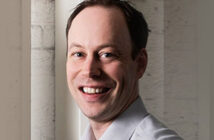SAN DIEGO, Calif. – January 28, 2013 – Cubic Corporation (NYSE: CUB) is developing a new system that could make large gatherings of people — like the Super Bowl, NASCAR races, Mardi Gras and events on the National Mall — safer and easier to manage.
“The core technology is designed to provide information for managing large crowds that flow in and out of events,” said Walt Bonneau, who helped develop the system.
Using a series of sensors and Cubic’s Mission Rehearsal Planning System (MRPS), authorities will be able to accurately determine in real time the volume of people flowing through a large area and even model what will happen in the future so steps can be taken to avoid problems.
“It’s a really high-tech approach to an age-old problem of managing large groups of people to keep them safe and avoid catastrophes,” said Bert Ges, director for Cubic’s Operations Effectiveness Group.
The annual Hajj pilgrimage in Saudi Arabia is probably the largest crowd-management challenge anywhere in the world, so Cubic is using it as an example of how the new system could be employed.
The Hajj is one of the five pillars of the Islamic faith. Every able-bodied Muslim with the means to do so is expected to make the journey to Mecca for the Hajj at least once in his or her lifetime.
Today, more than three million people make the pilgrimage each year during four days in the 12th month of the Islamic calendar. They perform a variety of religious rituals, such as walking counterclockwise seven times around the Kaaba, a cube-shaped building that is Islam’s most sacred site.
Managing the crowds during the Hajj has been a long-standing challenge. High-density crowding is extremely dangerous to the pilgrims attending the event as well as the operational staff.
Cubic’s solution, consisting of crowd-counting sensors plus tracking devices for support vehicles, all integrated and synchronized through MRPS, could substantially enhance crowd management operations at the Hajj.
Using sensors at the entrances to the square around the Kaaba, Cubic’s MRPS system would display color-coded data on computer displays revealing the density of the crowd throughout the square and how fast people were moving. The system could also estimate how a situation would evolve over time, providing authorities with predictive options to prevent overcrowding and maintain safety.
Cubic displayed a proof of concept demonstration of its Hajj solution at the Interservice\Industry Training, Simulation and Education Conference in Orlando last month.
For events like the Super Bowl, NASCAR races and events on the National Mall, the system would be most useful for tracking the flow of exiting crowds, said Bonneau, a consultant and former president of Cubic Security Systems. It could alert authorities about bottlenecks and provide real-time information for assigning police resources or for adding buses and trains to transit routes.
At Mardi Gras, Bonneau said, the system could provide advance warning of potential overcrowding on specific streets, giving police enough time to divert people out of those areas.
“The system uses the best technology to provide all the information the operational staff needs to keep people moving through an area at the optimal density and pace,” Ges said.
In September, Cubic successfully tested the system’s sensors in the Ocotillo Wells Desert Wilderness State Park, 110 miles northeast from Cubic headquarters in San Diego, California. The area was chosen because it has extreme temperatures, low humidity, strong sunlight and windblown dust that are similar to summer conditions in Mecca.
In November, additional indoor testing was conducted in Orlando to determine the effectiveness of the crowd-counting sensors at heights similar to how they would be mounted.





